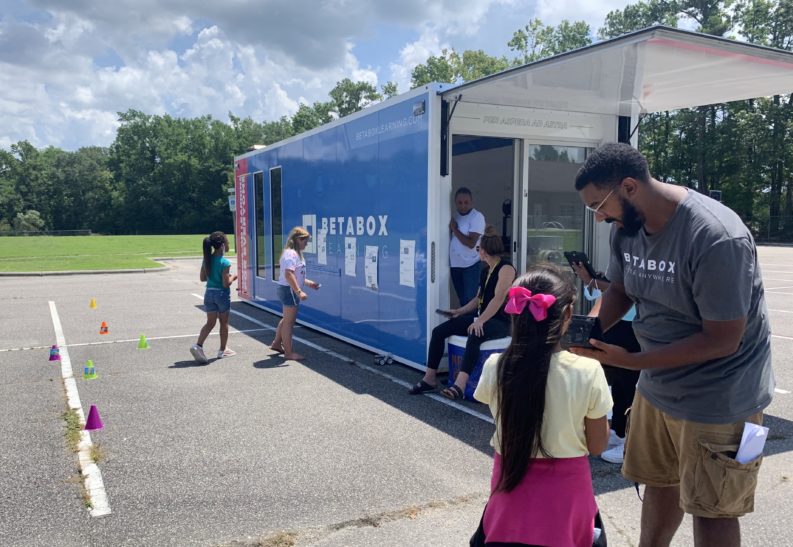Part 2 of a 2-part series
By: Rafi Vaca-Tricerri
“After teaching in a public school system for 15 years, I really love the freedom, voice, and opportunities for personal and professional growth I’m given with Betabox. I feel like I’m actually listened to when I give input. Learning new skills is very important and I feel like I learn something new each day with this job.” – Gretchen, STEM Technology Specialist
In the previous article (Part 1), I promised that I would explore how breaking from the mold of formal education may benefit student learning and teacher outcomes.
First, let us consider the definition of informal education: “learning that results from activities related to daily life experiences, work, family, or leisure.” In practice, this means formal education has an organized curriculum taught inside the classroom and informal education is more fluid and usually outside the classroom.
Technically, we do have a curriculum here at Betabox, but it’s not like what you see in a typical classroom. In our current lessons, students use autonomous vehicles and microcontrollers. In addition, students can manipulate the technologies we introduce, such as hacking into robotic cars or programming autonomous flight algorithms into drones. We also facilitate ethical discussions around technology so students will be more prepared to make informed decisions in the public sphere.
From an educator’s perspective, we have the most impact when we can begin without any significant learning plan. There is no pressure to pass a test, memorize a fact, or perform. This allows us to improvise and modify the lesson based on what children want to learn that day. Therefore, what we teach is based on students’ interests, preferences, and relevance, which frees the student to explore without the anxiety of meeting a predetermined objective.
Our Technical Instructor, Brandon, had this to say:
“More emphasis is placed on the hands-on learning approach to build student engagement and build a greater depth of knowledge. There is also less of a “school” feel for our experiences so students feel less pressure to get everything right. It lessens the anxiety some students face thinking a quiz or test may follow.”
There is another strong sentiment coming from all of our former teachers working at Betabox: it’s really amazing to see students get excited about learning again. We all experienced times at our previous schools when no matter what we did, students would not buy into our lessons. Now, engagement comes so naturally with our hands-on lessons. Consequently, this rise in student engagement reduces the time and effort spent towards discipline. Brandon sums it up perfectly:
“Coming from a formal classroom to a more informal/non-traditional setting was an adjustment at first. I was used to the ‘structure’ or policies and procedures associated with a traditional classroom at first. Basically being told what to do and how to do it. However, as I have settled into my new role I like the autonomy that has come along with it. I now feel I have more freedom to make decisions associated with student learning.”
It makes sense that teaching technological skills to students in K-12 is well received in an informal setting. After all, much of the digital learning that we experience as human beings occurs outside the classroom, with pure curiosity as our guide. Informal learning happens when solving problems that arise in our daily activities, hence the importance of extending learning outside of the classroom and safely introducing real-world problems like network security.
With 31.8 million adults in the United States classified as “not digitally literate,” according to the NCES, there is clearly a need for more access and education around digital learning. This is especially true for underserved communities that are more likely to be digitally illiterate, since they have a lower rate of labor force participation and education in STEM fields. But if our school systems plan to address this challenge, they should look towards successful strategies that already exist.
What makes Betabox most intriguing is that we have formed a symbiotic relationship with formal education teachers. We have taken the current obstacles (lack of engagement, resources, etc.) in many traditional classrooms and filled a need. As cited in a 2014 report about formal-informal partnerships, science teachers partnering with informal science educators, such as at zoos, museums, and gardens, have a better chance of engaging their students in biology, physics, chemistry, conservation, and engineering.
After meeting with many dedicated classroom teachers, I hope that there will be more collaboration between schools and informal science programs to increase student interest in science careers!
Resources:

